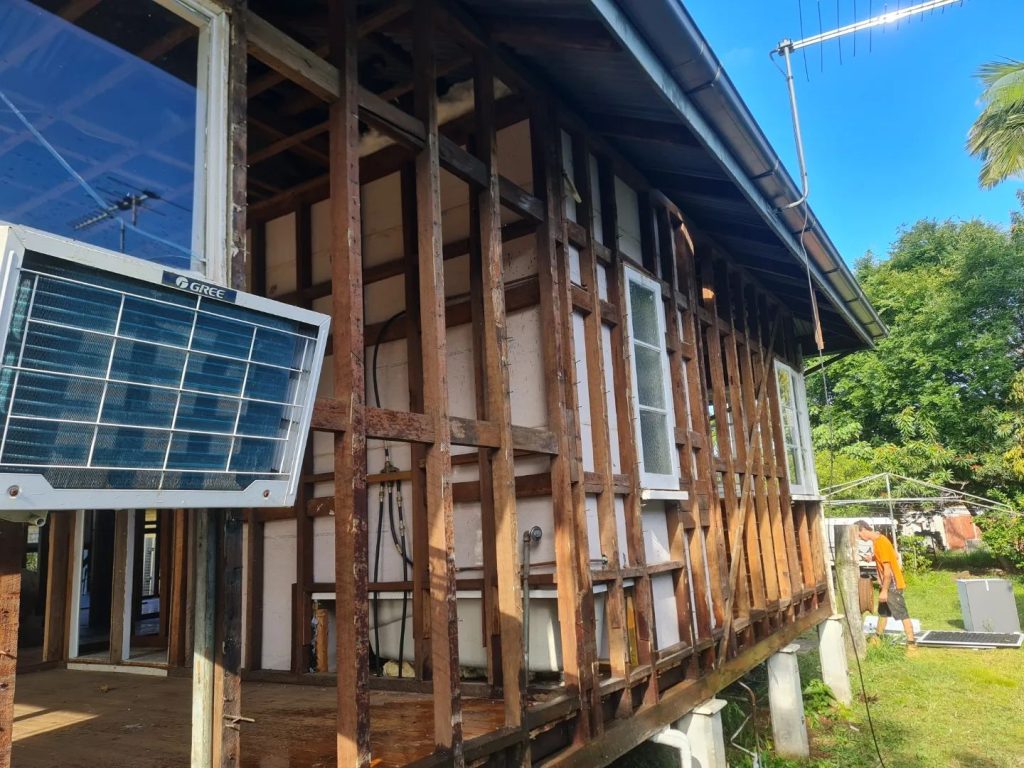If your home or building was constructed before the 1980s, then it’s likely it’s made of building materials containing asbestos.
Classified as a hazardous material, asbestos needs to be removed if exposed or when a building is demolished. But asbestos removal in Brisbane isn’t as simple as it sounds. This is where safety and compliance matter.
So, here’s what property owners should know before planning a demolition project.

Why Asbestos Is a Concern in Brisbane Demolitions
Asbestos is a major concern during Brisbane demolitions because several common building materials contain it. These include roofing shingles, insulation, ceiling tiles, popcorn ceilings, and vinyl sheet flooring.
Asbestos is a carcinogenic material and no amount of exposure is considered safe because it can cause scarring and inflammation over time. And when building materials containing it are disturbed, such as in demolition, it can lead to health risks. Consequently, local legislation requires professional asbestos removal in Brisbane before resuming demolition.
How Asbestos Is Identified Before Demolition Begins
Queensland regulations require property owners to conduct an asbestos inspection by a licensed expert before starting demolition. It begins with a visual assessment, where experienced inspectors check parts of the building that commonly contain asbestos. If asbestos is suspected, they take samples from the materials and send them to a lab for testing.
In some cases, you’ll need to maintain an updated asbestos register, and if you’re considering demolition, you’ll need to provide a survey report. It’s important that you hire a professional with a valid asbestos assessor’s licence because DIY inspection is both unsafe and illegal.
The Licensed Removal Process
In Queensland, only a trained professional with an asbestos removal licence can remove asbestos before demolition. Keep in mind that there are two types of asbestos removal: Class A and Class B.
- Having a Class A licence means that they’re qualified to handle friable asbestos. These are materials that can be crushed by hand
- Having a Class B licence means that they can handle non-friable asbestos removal of bonded materials, such as cement sheeting.
For asbestos removal in Brisbane, it’s best to hire a professional with both licences, like Next Gen Demolition. During asbestos removal, you can expect the following process:
Planning
During the planning stage, professionals consider whether the asbestos is bonded or friable, who occupies the property, and the possible timeline for removal.
Containment
Before any materials are disturbed, the asbestos removal team implements strict containment procedures. They set decontamination units, install air filtration systems and negative pressure units, and seal off affected areas. They also prepare specialised disposal bins for hazardous materials.
Removal
After containment, experts use specialised tools to remove asbestos from affected areas. Extraction techniques can vary depending on whether asbestos is present in internal walls, roofing sheets, insulation, or other materials.
Clearance and Monitoring
After asbestos removal and disposal, professionals perform a post-removal clearance inspection. They inspect the area, test dust in the area, and monitor air quality.
Depending on the amount of asbestos present, the removal process can take anywhere between a few days to a whole week
What It Means for Your Demolition Timeline and Cost
Consider asbestos removal requirements as you initiate a demolition project. Asbestos removal is only considered a delay in the demolition if you fail to factor it in the demolition process earlier. Otherwise, it should be given its place in the timeline.
Asbestos removal also affects the overall demolition cost. While it certainly adds to the cost, it’s unavoidable and offers benefits like peace of mind and compliance. Since it’s unavoidable, the best way to keep things running smoothly is to ensure early identification

Work With Professionals For Asbestos Removal in Brisbane
If you’re considering home demolition and rebuilding, asbestos removal is an essential step. Queensland regulations require that asbestos is removed from a property before demolition can begin. Asbestos is detected after scheduling an inspection and definitively testing material samples. Once confirmed, asbestos is removed through a comprehensive process that includes planning, containment, removal, and monitoring.
Asbestos removal can delay your demolition project and become an unexpected cost if you don’t account for it. The best way to prepare is to include it in the timeline, start early, and work with experienced demolition professionals like Next Gen Demolition. With Class A and Class B removal licences, we’re qualified to handle all types of asbestos removal in Brisbane.
